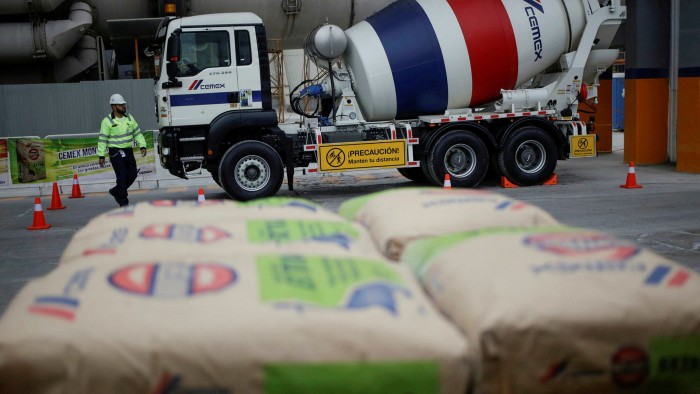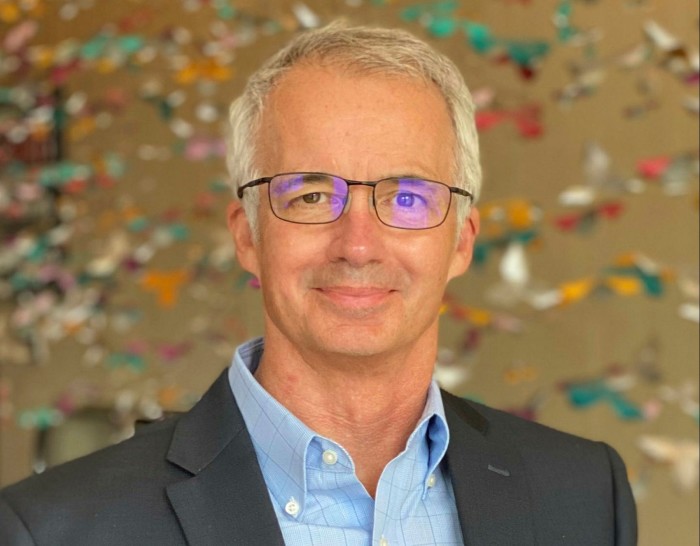Cement makers focus on waste collection in quest to cut carbon

Roula Khalaf, Editor of the FT, selects her favourite stories in this weekly newsletter.
Making cement demands high temperatures, consumes large amounts of raw materials and produces serious amounts of carbon dioxide. No wonder its manufacturers are reviewing their operations, from the chemical processes involved to the materials they use.
As the key ingredient in concrete, demand for cement has been rising rapidly. The US’s $1.2tn infrastructure bill, designed to finance roads, bridges and tunnels, airports and other upgrades, will only add to this. Yet the construction industry has few alternatives to concrete, which is both resistant to fire, weather and pollution and also strong, versatile and durable.
“We use concrete because it’s a genuinely good material,” says Rupert Myers, senior lecturer in sustainable materials engineering at Imperial College London. Substitutes include stone, brick and steel and timber “but we don’t produce enough of any of those materials at the moment”.
In short, the cement industry is one of the “hard-to-abate” sectors — those that face the biggest challenges in reducing carbon dioxide, directly or indirectly. Production of 10 tonnes of cement generates about 6 tonnes of carbon dioxide. An estimated 4.1bn tonnes were used globally in 2020, up from 1.39bn in 1995.
In the past two decades, more efficient kilns, increased use of renewable energy and reduced use of clinker, which assists in binding cement, have helped the industry to cut its carbon emissions by more than a fifth, says Ian Riley, chief executive of industry body the World Cement Association.
Some companies are developing new production methods that take less of a toll on the environment. New Jersey-based Solidia, a technology provider to cement and concrete makers, has developed a form of cement that can be fired at a lower temperature than traditional Portland cement.
Also, rather than retaining water during curing — the process that gives concrete its strength — Solidia’s concrete consumes carbon dioxide. “In this case, the water doesn’t react so it can be evaporated off, trapped and recycled,” explains Russell Hill, the group’s chief technology officer and interim CEO.
Companies are exploring other ways to break the take-make-dispose production model by using waste for alternatives to clinker — for example, slag from steel mills, and fly ash, a byproduct of power plant coal combustion.
Holcim, the Swiss cement group, is using fly ash recovered from landfill sites, which will help clean up these sites and allow them to be reused. “That’s a double bonus,” says Magali Anderson, Holcim chief sustainability and innovation officer.

Meanwhile, the industry’s search for alternative fuels is leading it to waste from municipal and industrial sources. This can provide a more sustainable supply, and is often cheaper than traditional fuels, such as coal.
However, turning refuse into fuel means the cement companies must develop waste management capabilities. Holcim has a subsidiary organisation called Geocycle through which it collects waste from industry and municipalities to process for use in its cement plants.
For cement companies, the investment required to do this depends on the strength of local waste management sectors — and that is determined, at least partly, on how far regulations limit landfill and encourage recycling.
“In Europe, there are well-established players dedicated to waste management and we have long-term contracts with them,” says Vicente Saiso, head of global sustainability at Mexico’s Cemex. “But where there is no regulation or weak regulation, we have been forced to get involved in the waste management supply chain ourselves.”
This may mean cement companies establishing the infrastructure needed to collect, separate and treat waste or forming partnerships with local companies to do so.
When suitable regulatory frameworks, partnerships and systems are in place, the use of waste materials presents opportunities for cement production to align itself with the circular economy. “It’s not just a way to reduce carbon dioxide but it’s also about building more with less and decoupling our growth from our use of natural resources,” says Anderson.
Holcim already does this at scale. In 2020, it recycled and reused 46mn tonnes of waste — almost as much as the 47mn tonnes of handled by Veolia, one of the world’s largest waste processors.
“Our objective is to increase that to 75mn tonnes by 2025 and to 100mn tonnes by 2030,” comments Anderson. “So we are actually a huge waste processing company.”
Comments